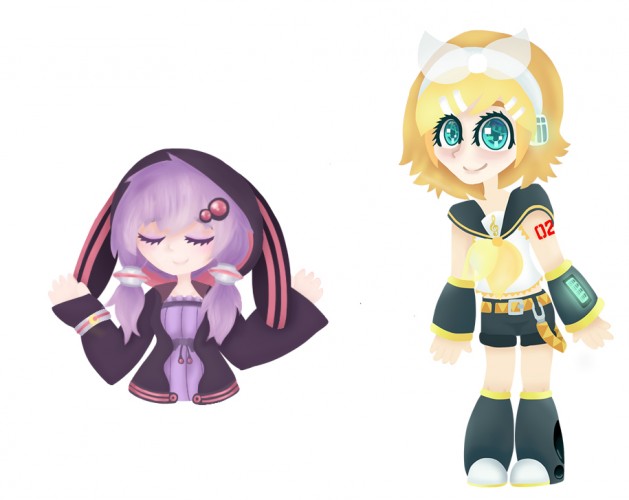On April 17th, I hosted a community night to explain the cultural phenomena surrounding Vocaloid and demonstrating the software to others in the Design Lab. Vocaloid is often misunderstood as an anime, a band with cute characters, or an animated dance group. However, as previously mentioned, it is a software on its own. With additional “voicebanks”, a user can manipulate a voice to sing anything in the given language of the voicebank.
The misconceptions attributed to Vocaloid are usually due to the popular culture formed around the creations made with Vocaloid. Producers and fans have created all sorts of content connecting to these characters, whom of which previously had no backstories or personalities. The content includes original music (as expected), vocal covers, dance covers, music videos, holographic concerts, costumes, fanart, and much more.

Examples of author's fanart: Rin Kagamine (Left) and Yukari Yuzuki (right)
Although this is most popular from the Japanese electronic music created from the Vocaloids, including the famous Miku Hatsune, the software was created originally for English voicebanks. These were severely unpopular, and still remain quite unpopular today. In fact, many English voicebanks are available with sampling from English speaking voice actors, but producers wishing to produce songs in English will often still choose a bilingual Vocaloid originating in Japanese, for example, Gumi, Luka, Rin and Len Kagamine, and even Miku.
With “Vocaloid” often being thought of as a genre itself, each song created follows any genre its producer intends. In my experience, most songs have fallen within three categories: cute/upbeat, electronic, and/or rock. These seem to be the most widely produced, as they are the highest in demand in Japan from the Vocaloid community.